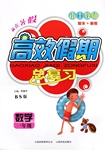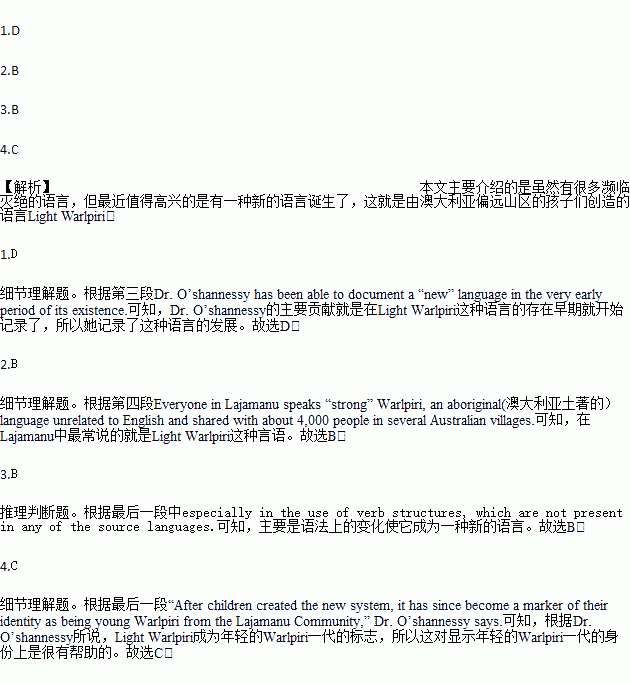题目内容
There are many dying languages. But at least one has recently been born, created by children living in a remote village in northern Australia, according to Carmel O’shannessy, a linguist at the University of Michigan.
The language, called Light Warlpiri, is spoken only by people under 35 in Lajamanu, a village of about 700 people in northern Australia. In all, about 350 people speak the language as their native tongue.
Since many of the first speakers of this language are still alive, Dr. O’shannessy has been able to document a “new” language in the very early period of its existence.
Everyone in Lajamanu speaks “strong” Warlpiri, an aboriginal(澳大利亚土著的)language unrelated to English and shared with about 4,000 people in several Australian villages. Many also speak Kriol, an English-based creole(混合语) that is widely spoken in northern Australia among aboriginal people of many native languages.
Many words in Light Warlpiri originate from English or Kriol. But light Warlpiri is not simply a combination of words from different languages.
Dr. O’shannessy offers this example: Nganimpa-ng gen wi-m si-m worm mai naus-ria. (We also saw worms at my house.)
It is easy to see nouns come from English. But the -ria ending on aus (house) means “in” or “at,” and it comes from Warlpiri. The -m ending on the verb “si” (see) indicated that event is wither happening now or has happened, a “present or past but not future” tense that does not exist in English or Warlpiri. This is a way of talking so different from either Warlpiri or Kriol that it is considered a new language.
The development of the language, Dr. O’shannessy says, began with parents using baby talk with their children in a combination of the three languages. But the children took that language as their native tongue by adding some changes, especially in the use of verb structures, which are not present in any of the source languages. “After children created the new system, it has since become a marker of their identity as being young Warlpiri from the Lajamanu Community,” Dr. O’shannessy says.
1.What is Dr. O’shannessy’s main contribution?
A. She has preserved aboriginal languages.
B. She has worked hard to save dying languages.
C. She has helped to popularize English in Australia.
D. She has recorded the development of Light Warlpiri.
2.What is the common language in Lajamanu?
A. Kriol. B. Warlpiri.
C. English. D. Light Warlpiri.
3.What makes Light Warlpiri a new language?
A. The spelling. B. The grammar.
C. The Vocabulary. D. The pronunciation.
4.According to Dr. O’shannessy, Light Warlpiri is helpful in______.
A. improving existing languages
B. understanding parent-child communication
C. showing young Warlpiri’s identity
D. achieving unity among the Lajamanu Community
 本土教辅赢在暑假高效假期总复习云南科技出版社系列答案
本土教辅赢在暑假高效假期总复习云南科技出版社系列答案 暑假作业北京艺术与科学电子出版社系列答案
暑假作业北京艺术与科学电子出版社系列答案 第三学期赢在暑假系列答案
第三学期赢在暑假系列答案
